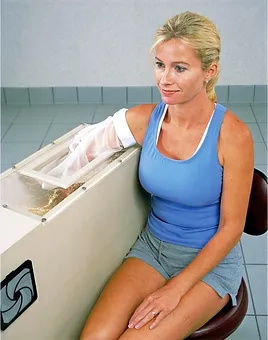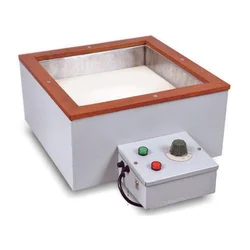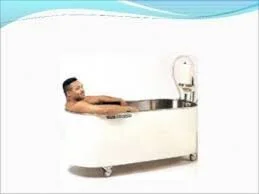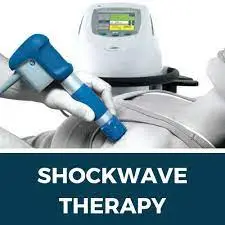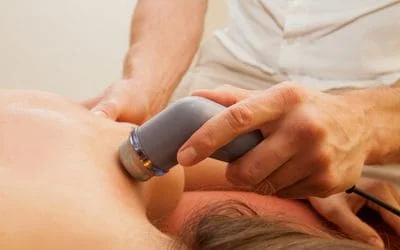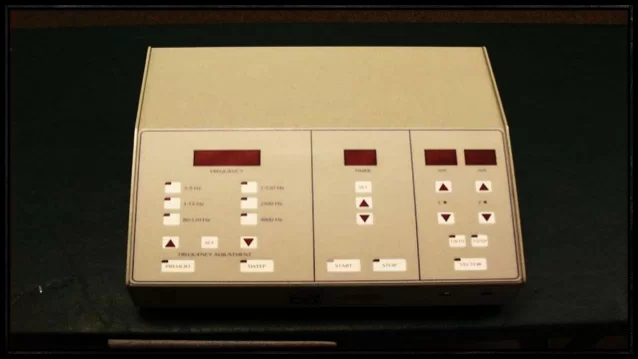Fluidotherapy
Fluidotherapy: What is it?
A therapeutic technique used in physical therapy and rehabilitation settings is fluidotherapy. To create a fluid-like medium, cellulose particles (such as finely crushed maize husks) are coupled with a dry thermal airflow produced by a specifically constructed machine. For treatment, patients put their affected body parts—such as their hands, feet, or limbs—into the fluidotherapy machine.
A warming and massaging feeling is produced around the injured body area during the therapy by the cellulose particles and dry thermal air. The patient’s needs and tolerance can be taken into account when adjusting the fluidotherapy’s temperature.
Fluidotherapy creates dry Whirlpools of smaller solid particles floating in heated air and gives the two substances liquid-like properties by employing high-intensity heating. In addition to surface heating, it allows for an active range of motion and tactile stimulation.
Research contrasting its heating capacity with that of a Whirlpool and a paraffin bath found that they were similar. Because fluid treatment lowers pain, edema, and muscular spasms, it can be used to treat acute or subacute traumatic or non-traumatic musculoskeletal issues of the extremities. It has been demonstrated that reducing pain and stiffness and increasing range of motion are beneficial for hands and wrists that are injured or arthritic.
A dry heat-in-order technique called fluidotherapy transfers energy by forced conduction. It is often referred to as dry heat treatment. Heat is transferred when heated air and cellulose particles are pushed around the body part being treated inside the machine’s chamber. We call this method forced convection. Particles of a solid nature are propelled by the air and end up suspended.
Heat, massage, and fluidized particles work together to improve the range of motion, reduce inflammation, and improve blood flow.
Fluidotherapy’s characteristics are comparable to those of a dry or waterless whirlpool. Depending on the patient’s tolerance, the temperature and level of agitation can be changed. Usually between 100 and 125 degrees, the working temperature can be decreased to room temperature. Treatments last between fifteen and thirty minutes on average.
Different amounts of stimulation can be used to desensitize hypersensitive areas. Patients can move the afflicted body part through the particles and perform exercises while undergoing fluid therapy.
The Functions of Fluidotherapy Equipment:
So, how exactly do these devices perform their magic? The heating element of the fluidotherapy machine brings the particles and air to a precise, regulated temperature to start the procedure. The finely powdered particles are suspended in the warm air after the desired temperature is reached, resulting in a calming and pleasant ambiance.
The particles in the chamber move and twirl gently as you submerge your body part, mimicking the sensation of a light massage. The heat and massaging motion enhance blood circulation, reduce tense muscles, and encourage the body’s natural healing processes. It’s similar to getting both heat therapy and a relaxing massage at once!
Advantages of Hydrotherapy:
Fluid treatment could be beneficial for:
- decrease in pain and inflammation
- reduction of joint stiffness
- Increased range of motion and less muscle spasm
- Improving tissue repair
- Increasing the blood and nutrition flow to the area
- The diagnosis may be acute to subacute, traumatic, or non-traumatic extremity musculoskeletal diseases.
- Treatment with heat is safe to use while exercising.
- The treated area receives very little pressure.
- Applying heat treatment is easy.
- gives out an amazing, dry warmth.
Fluidotherapy is similar to whirlpools, moist heat packs, and paraffin baths, therefore it can be used in place of several other heat therapy techniques. The purpose of administering heat is to ease the signs and symptoms of specific disorders by altering the core temperature within the connective tissue and the skin.
Fluidotherapy’s dry atmosphere makes it more resistant to the growth of microorganisms.
Because heat promotes tissue flexibility, it helps release painful knots and relax stiff muscles while at rest. It may comfort strained, hurting nerve endings. Your regular metabolic rate is accelerated, which expedites the healing process.
Fluidotherapy’s limitations:
- The apparatus is highly costly.
- If the limb is maintained in a dependent position, edema could worsen.
- The device could cause overheating and blistering of tissue.
- Some individuals can’t stand the inside particles in the equipment.
- The particles may spill on a smooth floor, making the surface slippery and increasing the risk of falls.
Tools of fluidotherapy:
- The device is a cabinet filled with cellulose that is made from finely ground maize cob.
- The gadget circulates heated air through the particles, causing them to flow like a liquid.
- It allows for more heating than treatments with water or paraffin.
- The device blows hot air through and over the particles using an electric fan inside a steel cabinet with a top that is thermostatically controlled.
Features To Take Into Account When Selecting A Fluidotherapy Device:
Knowing the essential characteristics is essential as it will direct you in the direction of the ideal match. Come along as we dissect the crucial elements to take into account when selecting a fluidotherapy device.
Portability And Size
Compact Options for Home or Small Clinic Use: A compact fluidotherapy machine may be the best choice for you, depending on your demands and available space. These portable variants are perfect for use at home or in smaller clinics since they offer convenience without compromising the therapeutic benefits. They are made to be readily put up in different locations and transportable.
greater Models Fit for Commercial Use: A fluidotherapy machine with a greater capacity may be necessary if you manage a larger clinic or spa to accommodate many patients or clients. These high-end, commercial machines are made to endure repeated use and offer plenty of room for treatments.
Controlled Temperature And Safety Components
Adjustable temperature settings are essential since different people and situations may call for different heat intensities. As a result, selecting a fluidotherapy equipment with temperature settings that can be changed is crucial.
Safety precautions to avoid burns and overheating: People’s health and safety should always come first. Consider fluidotherapy apparatus that has security precautions such as temperature monitors, automated shut-off processes, and heat protection. By using these safety measures, the treatment environment is kept safe and secure and the risk of burns and overheating is decreased.
Friendly User Interface And Customisation Possibilities
Simplified Regulations for Quick Operation: With a fluidotherapy machine, you can concentrate on providing the finest care possible by making it easy to operate. Search for models that have easy-to-use interfaces and directions that are clear. Simple temperature, time, and other parameter modifications are made possible by intuitive controls, guaranteeing a hassle-free and easy experience for you and your patients or clients.
Extra functions like Timers and Pre-set Programs: Some fluidotherapy machines come equipped with extra functions that improve patient comfort and treatment efficiency. By utilizing timers to record the duration of every appointment, you can ensure that the treatment times are constant. Processes can be streamlined and decision-making made easier with pre-made programs tailored to certain diseases or treatment objectives.
What conditions does fluidotherapy treat?
Many different disorders can be effectively treated with fluid therapy.
- Elbow
- Wrist
- Hand
- Ankle
- Foot
Indications of fluidotherapy:
- inflammatory response
- After surgery, rehabilitation
- Subacute disease
- maintaining state
Not recommended:
- Fever
- Zone of Anaesthesia
- severe cardiovascular conditions
- Bleeding
- Individuals who are sensitive to heat
Optimizing The Advantages: Guidance For The Best Fluidotherapy Treatments:
Let’s now explore some useful advice and techniques to help you get the most out of these amazing devices and maximize your fluidotherapy sessions.
It’s Important to Prepare:
For best results, arrange your therapy region and the machine before beginning a fluidotherapy training session. Some essential actions that must be taken are as follows:
Make sure the device is neat and reach and operating correctly: To guarantee the fluidotherapy machine’s longevity and optimal function, undertake routine maintenance and cleaning. Observe the maintenance schedule and safety instructions provided by the manufacturer.
Decide on the right temperature: Adapt the temperature settings to your patient or client’s demands and comfort level. Take into account any particular ailments or sensitivity they could have. Choose a temperature that offers healing warmth without being too hot or uncomfortable.
Prepare the treatment area: For the meeting, provide a warm and welcoming space. Arrange any extra items that could improve the client’s comfort and relaxation, such as pillows and towels. Remove any obstacles or distractions that can make the session challenging.
Interaction And Personalisation:
Customization and efficient communication are essential for optimizing fluidotherapy’s advantages. Think about the following tactics:
Evaluate each patient’s or client’s unique needs by spending time getting to know their preferences, worries, and specific goals. To identify the areas that need more attention or specialized treatment, conduct a thorough examination.
Talk about the course of treatment: Make sure you explain the goals, advantages, and expectations of the fluidotherapy session in clear terms. Respond to any queries or worries that your customer or patient may have. This makes it easier for trust to grow and promotes a team-based therapy approach.
Customize the course of action: Adapt the fluidotherapy session to each person’s needs. To maximize the therapeutic benefits, modify the session’s duration, intensity, and temperature. Take advantage of other techniques, such as therapeutic massage or being stretched, to improve the fluidotherapy procedure.
Observation and Aftercare:
Long-term success depends on tracking the improvement and giving the proper follow-up treatment. Think about the following tactics:
Observe and evaluate: Pay great attention to your patient or client’s responses and reactions throughout the fluidotherapy session. Keep track of any changes in overall comfort, range of mobility, or degree of pain. Note any noteworthy advancements or areas that still need work.
Analyse results: Following the session, assess the results and get your patient’s or client’s input. Evaluate how effectively the treatment is working for them and how it affects their general health, functionality, and symptoms. Make use of this data while arranging your next course of treatment.
Continue to support the client: In the interim between fluidotherapy treatments, provide direction, self-care activities, or suggestions. Give your client or patient the resources and information they need to continue improving outside of the therapeutic environment.
Wrapping Up
Greetings, readers, on successfully finishing this fluidotherapy tour. You’ve heard from experts, become aware of its many advantages, and figured out how to get the most out of your fluidotherapy sessions. This brings us to the recognition of fluidotherapy’s powerful ability to foster change and well-being in our lives.
Fluidotherapy is a demand for a whole-person approach to health, not just a method of treatment. It motivates us to take advantage of the inherent healing powers of our bodies to enhance general well-being. As you explore this field, maintain your curiosity, keep learning, and accept the limitless possibilities fluidotherapy has to offer. Remember that you can heal and transform and, therefore harness the power of healthcare and fluidotherapy.
FAQs
For what reason is liquid therapy used?
Because fluid treatment lowers pain, edema, and muscular spasms, it can be used to treat acute or subacute traumatic or non-traumatic musculoskeletal issues of the extremities. It has been demonstrated that reducing pain and stiffness and increasing range of motion are beneficial for hands and wrists that are injured or arthritic.
What is the mechanism of action of fluidotherapy?
fluid-based treatment. Particles close to the affected extremities are stirred by this type of superficial dry heat, which has a desensitizing effect. The range of temperatures is 115 °F to 120 °F, or 46.1 °C to 48.9 °C.
How long does a course of fluid therapy take to finish?
Treatments last between fifteen and thirty minutes on average. Different amounts of stimulation can be used to desensitize hypersensitive areas. Patients can move the afflicted body part through the particles and perform exercises while undergoing fluid therapy.
What are the advantages of fluid therapy?
To reduce minor pain and stiffness associated with non-rheumatoid arthritis, dry heat therapy promotes range of motion, reduces localized discomfort, decreases localized blood circulation, and relieves localized pain.
When should one apply fluidotherapy?
Localized pain relief
treating patients with minor pain and stiffness who do not have rheumatoid arthritis
Enhance regional blood flow
In conjunction with physical activity, joint range of motion management
References
- Fluidotherapy Machines: A Modern Wonder of Therapy. (n.d.). MassageTools. https://massagetools.com/blog/fluidotherapy-machines-are-they-worth-your-bucks?srsltid=AfmBOoq25M_5bxxxiZ04L2S5fArU9FyndxKJnwjykqa5sXAEO5GFCRUw
- Sankhla, D. (2023, August 6). Fluidotherapy – Equipment, Benefits, Contraindication. Samarpan Physiotherapy Clinic. https://samarpanphysioclinic.com/fluidotherapy/

